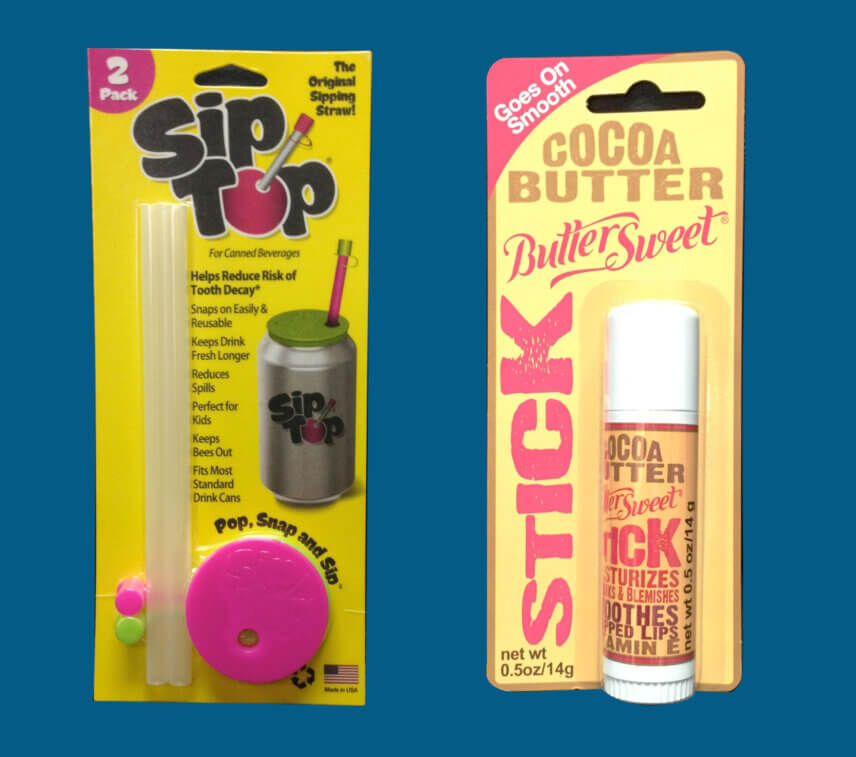For good visual packaging and production of any retail product, many companies wonder whether they should blister packaging or skin packaging. There are many similarities between the two packaging techniques but also many differences.

Of the two options, blister packaging has the highest “perceived value” on the retail shelf and has many advantages in packaging. The consumer will accept the clean lines, glossy protective PVC outer shell, and good card graphics as a quality packaging solution.
On the other hand, skin packaging is often used with lower-cost items and accessories, which end up categorizing it as the lesser expensive, lower value proposition.
There are several considerations you should use when deciding which packaging type would be best for your product:
- What will your product sell for? If it is selling for under $5.00, then skin packaging may be the best option.
- What is the volume of your packaging production runs? Skin packaging may be the more cost-effective solution if it exceeds 1 million units. For volumes between 25K and 500K, blister and skin may be identical in cost.
- What is the item that you are packaging? If it is related to hardware, accessories, metal components, drill bits, or anything small and light, skin packaging may be the best solution.
- Will your package be holding several different items in it that your want the consumer to be able to view? Skin packaging is a suitable format for this.
- Do you need some images or icons on your package to help explain what it is or what it does? Blister cards provide the best surface for printing clean graphics, as virgin SBS (solid bleach sulfate) is most commonly used. On the other hand, a mylar film covers the entire front surface of a skin card which can inhibit the clarity and overall printing quality of a skin card.
What Are The Advantages of Blister Packaging?
Blister packaging remains being one of the most popular packaging methods for many reasons. First, it is utilized for packing countless retail items, including tools, cosmetics, household products, and much more. This flexible option furnishes many advantages, so it is a go-to solution for various unique products. Other benefits include the following:
- High perceived value at retail
- Several design options, such as trap blister, multiple blisters, mock clamshell, full face blister
- The package can offer both a hang hole AND a stand-up “foot” option
- SBS card stock is excellent for high-end graphics
- Cost-effective options are available for printing 4/4 (4 colors on the front of the card and four colors on the back of the card)
- Accepted by all retail outlets
- Theft resistant
- Transparent, rigid protective PVC blister front to showcase and protect your product.
- Can stand on a shelf or hang on a peg
- No die-cutting required
What Are The Advantages of Skin Packaging?
Skin packaging is a relatively inexpensive product encasing method that provides some attractive features for manufacturers and retailers who sell their products. This cost-effective technique is particularly appropriate for small, lightweight items. Other benefits of skin packaging include:
- Low cost in high volumes (over 1MM units per year)
- Clear film (skin) on the front of the card gives the consumer a clear view of your entire product.
- Hang hole available for hanging on a peg
- It can display multiple components on one card
- Clear glossy film protects the product and is theft resistant
Retailers are consistently faced with important considerations about effectively marketing their products. Showroom space is always at a premium for retailers, so the way an item is packaged can have a significant impact on display strategies and inventory decisions.
Manufacturers and wholesalers need to recognize this as they select their packaging methods. Prudent retail professionals analyze their profitability in terms of the return/sq. ft. If your item carries low retail profit margin potential, store owners will not dedicate large display footprints for marketing it.
Skin packaging presents the best option for displaying low-cost small items because retail stores can utilize die-cut hang holes to place products at the consumer’s eye level. Using vertical space to efficiently display a wide variety of items is an essential strategy for retailers with high numbers of SKUs.
While blister packaging is the best option for a higher perceived value of your product and offers many options to choose from. Whether you require a face-seal blister, trap blister, 2-piece blister, or a combination of clamshell packaging and blister, this type of packaging provides the most versatility for your retail product.
However, if you’re still unsure about choosing between these two popular packaging options, feel free to request a quote or call our office. A packaging specialist will get back to you right away and go over the different options that best match your packaging needs.
